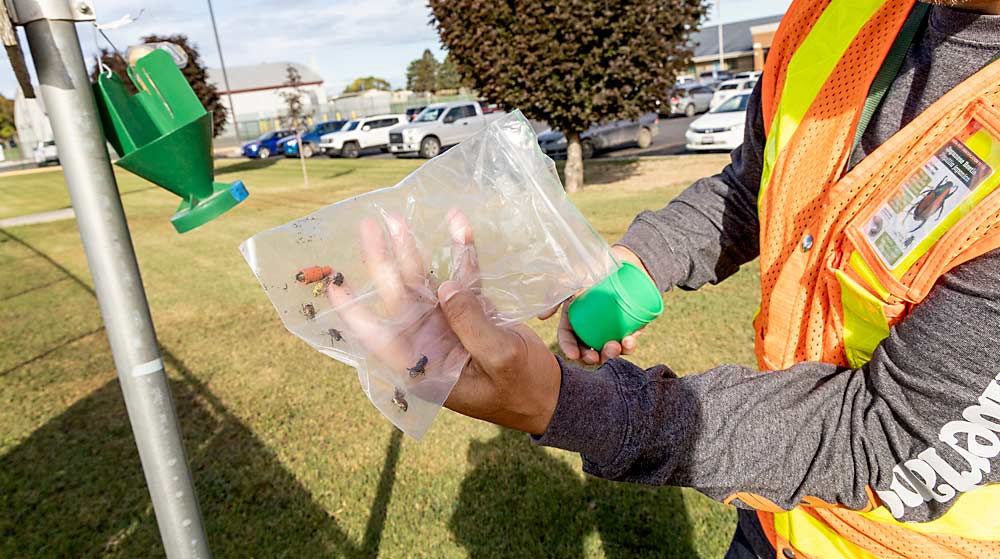
Last summer, a trapping program designed to ascertain the extent of the recently detected Japanese beetle population in the Yakima Valley ended up trapping 24,000 of the shiny green invaders. That was quite a surprise after the 2020 season, when just a few routine traps caught three insects and alerted officials.
“If you were here back in July, they’d be landing on you,” said Nasario Gonzalez, a scout with the Washington State Department of Agriculture’s plant protection program. In September, Gonzalez took Good Fruit Grower to ground zero for the invasive pest: a residential area in the small town of Grandview, surrounded by vineyards, hop fields and orchards — all crops targeted by Japanese beetles (Popillia japonica).
Every week, Gonzalez and a team of scouts checked a network of some 700 traps across the lower Yakima Valley. Informed by that trapping data, the WSDA is in the process of planning a $4.9 million eradication effort set to launch this year.
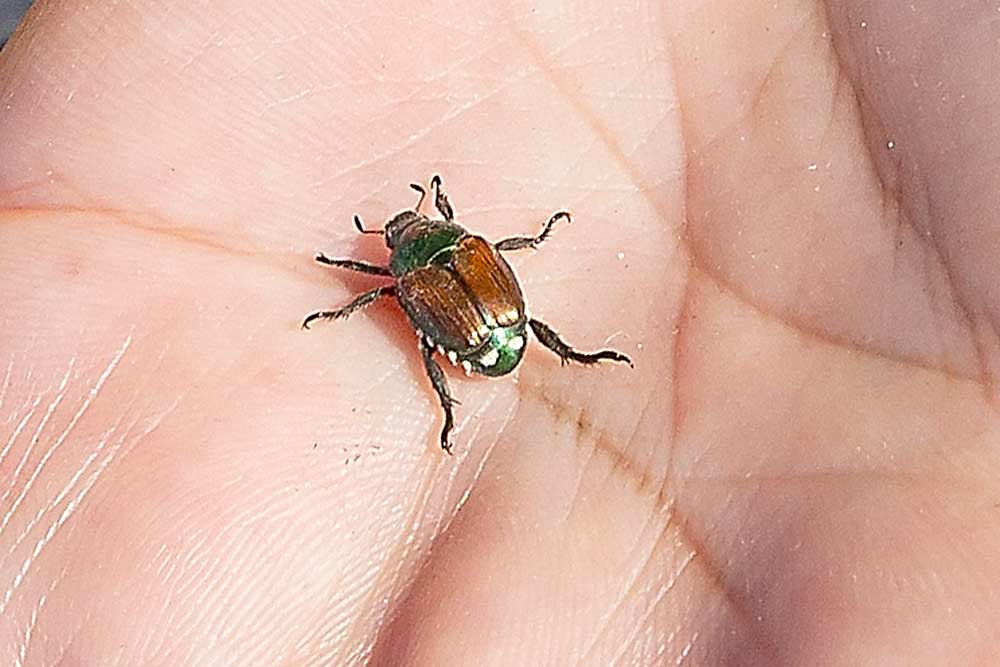
“We’ve decided that it’s a high enough risk pest and at high enough numbers that we need to go the chemical route to eradicate the pest,” said Camilo Acosta, the new Japanese beetle eradication coordinator. “It’s a pretty daunting task for our team, but we’re trying to have a positive outlook because this pest has been eradicated in other places and I think our outlook should be optimistic.”
Japanese beetles are a highly invasive pest with a wide host range and have been established for almost a century in much of the Eastern U.S., where they are routinely a nuisance for homeowners and an occasional pest of commercial fruit crops. There’s an existing base of knowledge on the insects, as well as traps, lures and labeled insecticides that give Washington a head start on control efforts that will include a quarantine to restrict spread, ongoing trapping and eradication, Acosta said.
A federal quarantine focuses on airport cargo to prevent introduction of the pest into Western states, but when it comes to community detection, a separate plan, known as the U.S. Domestic Japanese Beetle Harmonization Plan, provides a framework to reduce the spread of the insects in soil and potted plants from infested areas to beetle-free states.
Late last year, the WSDA proposed a quarantine that would bring an area of 49 square miles — centered on the Grandview hot spot — into compliance with that national guidance. It would regulate and restrict the movement of soil, noncommercial compost or manure, turf, yard waste, potted plants and bulbs year-round. During the summer when adults are active, the quarantine would also regulate movement of cut flowers and hop bines. The proposal, which has been developed with input from stakeholders such as dairy and crop producers in the area, should go up for public comment in the next few months, Acosta said.
For the eradication efforts, it’s all about community outreach.
“Most of the areas we need to treat are businesses, parks, schools, and front and back yards of thousands of residents,” Acosta said. “We can buy all the insecticides, but if we don’t have permission to treat someone’s property, we’re not going to get it done.”
He’s optimistic that, because agriculture is such an important industry in the area, most residents will understand the threat posed by the beetles and get on board with the eradication plan. But connecting with them one-by-one will take time.
That work actually began last summer, as Gonzalez and other scouts checked traps throughout the community, wearing bright orange vests and answering residents’ questions. Most people they encountered had never heard of Japanese beetles, he said, despite community meetings and news coverage. So, they handed out pamphlets and fact sheets to everyone they met.
“Every member of my team is going to have to be prepared to have a good conversation with members of the community,” said Acosta.
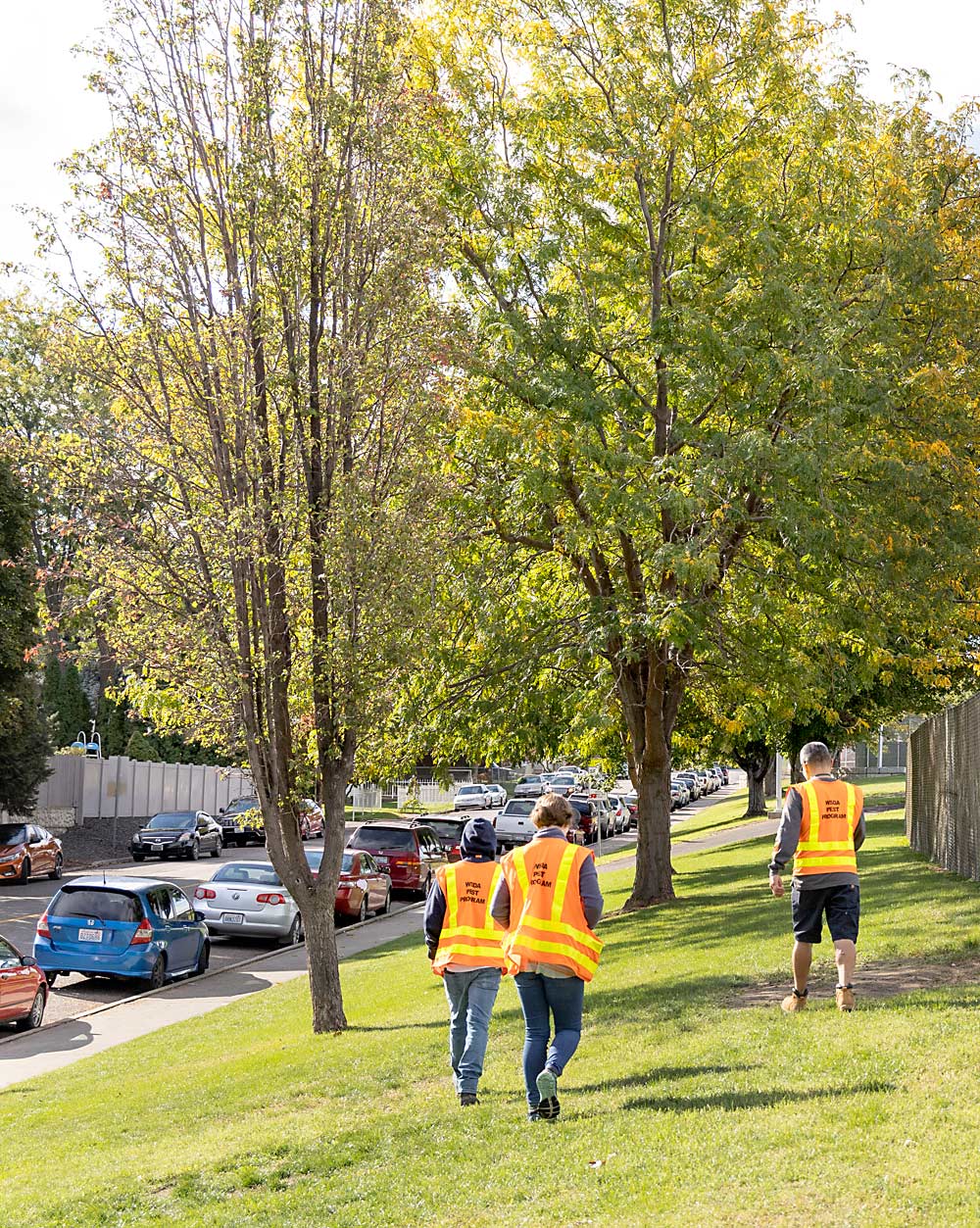
The state does not plan to treat agricultural lands, he added, but rather will let farmers, with guidance from Washington State University and their crop consultants, determine the right way to manage the pest if it is found.
As for traps, WSDA will manage those on both agricultural lands and in residential areas. The agency is in the process of developing mitigation strategies for crop producers in the proposed quarantine area. For example, they may “take a page from apple maggot surveys and put one Japanese beetle trap on either side of the field,” Acosta said, and if there is no catch, then it would be safe to transport the harvest.
The trapping effort will also be expanded for 2022.
“In 2021, our grand total was 24,048 beetles caught,” he said. “That gives us some optimism. That’s 24,000 beetles that potentially won’t lay eggs.”
—by Kate Prengaman
Control of Japanese beetles on grapevines
While Japanese beetles pose a new threat to Washington vineyards and orchards, Michigan growers have been contending with them for a long time. So, Michigan State University entomologist Rufus Isaacs joined the Washington State Grape Society’s annual meeting in Grandview in November to share some findings from his own work on the pest.
“Scouting for this pest is relatively easy: They are big and obvious and shiny,” Isaacs said in his talk, delivered via video conference. “As soon as you start seeing adult beetles, they are mating.”
Those distinctive adults lay eggs in moist soil, where grubs will feed on plant roots and overwinter. Adults emerge in the summer for about six weeks or so.
Isaacs recommended using monitoring traps carefully; they use plant volatile lures that can attract beetles from relatively far away.
“Don’t place traps in the vineyard, because they do tend to aggregate beetles around the area,” he said. He’s found the traps only catch about 80 percent of the beetles they lure to the area around the trap, and those that don’t make it into the trap will hang around and lay eggs.
Japanese beetles have over 300 host plants, with crabapple, apple, linden, cherry, ash, maple and grape being some favorites in Michigan.
But not all grapes. “In the vineyard, they are super selective about cultivars,” Isaacs said. “In general, the tougher the leaf, the less likely they are to feed on it.”
That means they are more attracted to thin-leafed vinifera than tough-leafed Concord. “They are always evaluating the options and always going to the best one that’s locally available,” he said.
Isaacs has conducted studies to estimate how much Japanese beetle-feeding grapevines can withstand. Young vines that experienced about 6 percent defoliation from 40 beetles placed on each vine showed no long-term effect on vine health.
Then, he escalated the damage — with the help of a graduate student using a hole punch to estimate up to 30 percent leaf loss. “The grapevines can handle some damage from this pest,” he said.
Other studies have found that trading grassy row middles for clean cultivation can help to control Japanese beetles, because they must go elsewhere to find places to lay their eggs, he said.
Control options targeting the grubs include nematodes, Milky spore and other bacterial biocontrols, and insecticides such as Admire Pro (imidacloprid). With so many chemical classes labeled, the risk is low for developing pesticide resistance, Isaacs said. He pointed the audience to MSU’s Grape IPM Program guide for specifics and recommended growers think about how their existing spray programs could be leveraged.
“Our growers might be treating for Japanese beetle when they are really treating for grape berry moth, which is a key pest,” he said. “You have a different pest complex, but you may not have to do a separate spray for this pest.”
—K. Prengaman

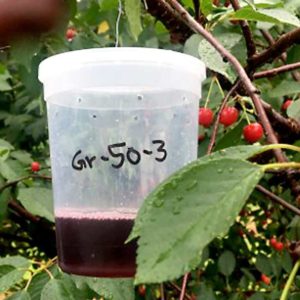
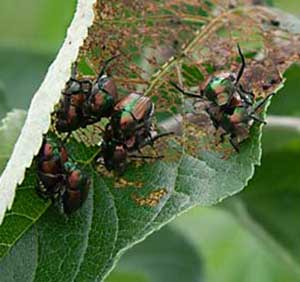





Leave A Comment